Persimmons: Pure Pucker Power
About the only bad thing you can say about a persimmon is that it has pucker power, if you pick it at the wrong time. If the fruit’s skin isn’t wrinkly it will be inedible.
What most people don’t know is that the persimmon is the North American ebony, Diospyros virginiana (dye-OSS-pih-ross ver-jin-nee-AY-nuh.) There are few trees more versatile than the persimmon. The fruit, actually the largest native berry in North America, can be eaten out of hand or cooked in various ways. Its seeds can be roasted and ground for a coffee extender. The leaves are loaded with Vitamin C and the hard, closed-grain wood can be worked (often to be made into “natural” wedding bands. )
Persimmons like to grow along the edges of things; fields, roads, rivers, rail roads, fences, trails. They can be anything from a spindly shrub to over 80-feet tall. I can well remember the first time I found a green persimmon fruit on the ground locally. I was hiking in the Wekiva State Park in Florida along Rock Springs Run. What was memorable about the event was I couldn’t find the tree. I turned 360 degrees and still couldn’t see a persimmon tree until I looked up, way, way up. Competing with other trees river side they were incredibly tall, and not nine inches through. They were spindly 70-foot tall trees! Quite atypical.
Most of the persimmons trees you will see, especially in Florida, are only eight to ten feet tall, occasionally 15 to 20 feet. Persimmons are found in the eastern half of the United States excluding northern border states. They’re also found in Utah, California and range into Mexico. Oddly, they are not naturally found along the Appalachian Mountains or the Allegheny Plateau. Perhaps altitude is an issue.
The Persimmon is usually the last tree to leaf out in the spring and the first to lose it leaves in the fall, a strategy to thwart predatory insects. The champion persimmon tree in the US, as of 2009, is in Yell, Arkansas. It is 94 feet high, 12.5 feet around and as a crown spread of 78 feet. It’s been around since the first English settlers came to North America. One of them, Captain John Smith, wrote about the persimmon in 1608. He said it tasted like an apricot and by 1629 it was introduced into England. In fact that was a main part of Smith’s reason to come to the Americas, find new plants.
While many authors say the ripe persimmon tastes like dates they taste like persimmons to me. I have no idea where they get a “date” taste unless they are just copying each other. Interestingly persimmons can be interchanged in any recipe with bananas, measure for measure, weight for weight. Yellow persimmons will ripen off the tree but the best ones are the wrinkly ones you have to fight the ants for. There is an old saying that persimmons don’t ripen until after a frost but that’s not true according to researchers nor here in Florida where any frosts show up a couple of months after persimmons fruit. Shaking a persimmon tree is the standard way of collecting the fruit. Process them by rubbing them through a colander. The pulp can be used to make jelly, syrup, beer, wine, liquor, bread, pancakes, pudding, molasses, fruit leather, dried fruit and ink. The pulp can also be frozen and eaten like ice cream. A peanut-like cooking oil can be squeeze from the seeds. Each persimmon can have one to eight seeds. Happiness is finding a persimmon with one seed, when there are eight there isn’t much to eat. The seeds, however, were used as buttons by the Confederate Army during the American civil war.
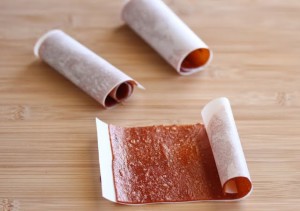
The fruit, especially the skin, can be made into fruit leather. Photo by KerbieCravings.
Another use for a persimmon tree is reportedly as a remedy for the itch of poison ivy. Remove a few twigs from a persimmon tree, cover with water, and boil for 20 minutes. Strain and cool the liquid. Several applications are said to dry the rash. By the way, persimmon tea is not universally praised. I have a friend who describes the taste of tea from green leaves as “dirty dishwater.” Tea from dried leaves is better. In fact, the longer the dried leaves are stored the better the tea tastes. Dry the leaves in a slow over for two hours. To make the seeds into a coffee substitute or extender clean them and roast them in the same slow oven. You can also throw the tough fruit skins into a blender, put the slurry on a cookie sheet and dry them along with the seeds and leaves in the same oven. Personally I eat the fruit skin and all but not the seeds
What Diospyros means is subject to a lot of mistranslation from Greek. The complicating factor is the distortion from Greek to Latin and the different alphabets and pronunciations. (There are five ways to represent the “ee” sound in Greek.) Then there’s the translation into English and its use by those who don’t speak Greek or know Latin. Such is the headache with Diospyros. Briefly it can mean “what God has sown” “God’s Grain” or “God’s fire.” Making it worse, the most common translation “food of the Gods ” does not land well on Greek ears. Ambrosia means “food of the gods. Diospyros does not.
In 300 BC or there abouts, Theophrastus called a local tree, the European hackberry, Diospyros. The fruits were astringent which ripened to sweetness and that is supposedly why Linnaeus called the persimmon tree Diospyros when he was naming plants. With that said lets tackle Diospyros. The disagreement is whether the two Greek words are “dio/spyros” or “thios/piros.” It comes down to Greek spelling. The most common translation is the more unlikely. As mentioned, Diospyros is often translated as “fruit of the gods” or “food of the gods.” That would be very bad Greek. Some translate Diospyros as “the fruit of Zeus” which is just plain silly. There’s also “heavenly plant” “God’s fire” Divine pear” and “Jove’s pear.” Jove’s Pear? That’s expired poetic license. Jove was the Roman equivalent of Zeus, or the Roman name for the top god. Where the pear came from I have no idea though in Texas the persimmon is sometimes called Jove’s Fruit.
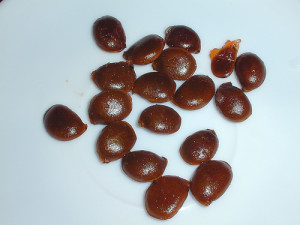
Roasted Persimmon seeds can be used to extend coffee. Photo by Really Raw Food.
A third possibility is Diospyros meaning “God’s Fire” in reference to the astringent unripe berries of the European hackberry but that would require changing a plural to a singular which is not likely in this case in Greek. Carl Linnaeus, the fellow who started naming plants, had the right idea of calling the persimmon after the ancient hackberry because of the way it ripens. He was not good at Greek yet his “food of the gods” has stuck. “God’s Wheat” is the closer translation for ancient Greek, which would mean the Diospyros in the modern vernacular means the “best food” or as Alton Brown says “good eats.”
Virginiana is of Virginia but in botanical terms it always means North America. Persimmon is the Anglicized version of an Algonquin name that means “dry seed” or “dry fruit” referring to the high level of tannins in the unripe fruit. That tannin is a good substitute for oak tannin. Persimmons do, however, come with two warnings. The first one is if you do not digest food well or have had gastric bypass surgery excessive consumption of persimmons can create intestinal blockage called a bezoar. It happens more in farm animals than man but people who consume huge amounts of persimmons or who have gastric issues are at risk.
As for the second warming. While the seeds can be roasted then ground into a black powder to extend coffee there may be reasons not to use it exclusively as a coffee substitute. See the “letter to Green Deane” below. The writer mistakenly made “coffee” out of the seeds rather than using them as a coffee extender, like chicory. It is included here in its entirety should it be important some day.
There is hardly a woodland creature that doesn’t like the persimmon. Its waxy, fragrant flowers help produce honey. The persimmon is also sometimes called “possom wood” because opossums know a good food when they find it. It even has entered the folky and now politically incorrect literature of Uncle Remus:
“B’rer Bear rushed into the patch and shook the persimmon tree. B’rer Possum dropped out from the ripe persimmons, landed on the ground and started running for the fence like a race horse. B’rer Bear chased him and gained with every jump. When B’rer Possum made it to the fence B’rer Bear grabbed him by the tail. B’rer Possum went between the rails on the fence and gave a powerful pull to get this out of B’rer Bear’s teeth. B’rer Bear was holding so tight and B’rer Possum pulled so hard that all the hair came off in B’rer Bear’s mouth, and if B’rer Rabbit hadn’t come along with a gourd of water B’rer Bear would have choked. From that day to this,” said Uncle Remus, knocking the ashes carefully out of his pipe, “B’rer Possum ain’t had no hair on his tail, nor any of his children.”
Persimmon Bread
3½ cups sifted flour
1½ teaspoons salt
2 teaspoon baking soda
1 teaspoon ground nutmeg
2 to 2½ cups sugar
1 cup melted unsalted butter and cooled to room temperature
4 large eggs, at room temperature, lightly beaten
2/3 cup cognac, bourbon or whiskey
2 cups persimmon puree
2 cups walnuts or pecans, toasted and chopped
2 cups raisins, or diced dried fruits (such as apricots, cranberries, or dates)
Optional: Orange zest or orange extract
1. Butter 2 loaf pans. Line the bottoms with a piece of parchment paper or dust with flour and tap out any excess.
2. Preheat oven to 350 degrees.
3. Sift the first 5 dry ingredients in a large mixing bowl.
4. Make a well in the center then stir in the butter, eggs, liquor, persimmon puree then the nuts and raisins.
5. Bake 1 hour or until toothpick inserted into the center comes out clean.
Persimmon Pudding
2 cups pureed persimmon pulp
2 eggs
1 3/4 cups condensed milk (unsweetened)
2 cups sugar
1/4 cup melted butter
2 cups flour
1/2 cup chopped walnuts
Stir condensed milk, sugar, butter, flour, and persimmon puree well and pour into glass baking dish. Sprinkle top with chopped walnuts. Bake for 35 to 45 minutes at 375F. Serve warm or cooled to room temperature. Delicious topped with a crème Anglaise or rum.
Green Deane’s “Itemized” Plant Profile
IDENTIFICATION: Tree, shrub size to 80 feet, usually 15 to 20. Leaves are oval, pointed, 3- to 6-inch long, lustrous dark green, sometimes covered with a harmless dark soot that can be washed off. Two handy identifying characteristics of the persimmon is young twigs are fuzzy and on new growth the branch will have leaves of different size. Bark on older trees is broken up into square blocks. D. virginana has leaf tips that are pointed, on D. texana the tip is flat, rounded or notched,
TIME OF YEAR: Fruit ripens in September/October. Fruit is not ripe until the skin is wrinkled.
ENVIRONMENT: Grows along edged of fields, roads, rivers and the like. Will grow in dry ground and partial shade but prefers moist soil and full sun. Slow growing, hardy to Zone 4
METHOD OF PREPARATION: Numerous: The pulp can be used to make jelly, syrup, beer, wine, liquor, bread, pancakes, pudding, molasses, fruit leather and dried.
HERB BLURB
The Native Americans had some herbal uses for the tree. The Alabama boiled the roots for a tea used in “bowel flux.” The Catawba used a bark infusion to treat thrush in babies. The Cherokee used it for bowel problems, sore throats, heartburn, liver problems, piles, thrush, toothaches and venereal disease. The Rappahannock used an infusion for thrush and sore throats. The tannic acid in the green fruit was used to treat diarrhea, dysentery, and uterine bleeding.
I received the following letter in 2010 in response to my article on persimmons. The writer says he made two pots of persimmon “coffee” rather than using the ground seeds just as a coffee extender. The first pot — four cups — was made from seeds fresh from ripe fruit off the tree, then roasted. No ill effects reported. The second pot was made from seeds picked up off the ground and/or from rotting fruit (enzyme action?) Then instead of directly into the oven the second batch of seeds were boiled first (taking something away? Changing something?) and then roasted. Two other possibilities are the first pot did not reach some critical chemical level and or he didn’t have an allergic reaction until a certain point with the second pot. And of course something else might be acting as well. I do not know the truthfulness of the account below but it seems reasonable to include it. More so, if it is accurate it is something foragers and researchers should know.
“I just wanted to shoot you a quick note about my experience with Persimmon seeds last fall, sorry it took so long for me to write. I have several of the trees in my yard and near my home, and I always enjoy the fruit in the late fall after frost. But I had never heard of making coffee out of the seeds before. Being the adventurous sort I gave it a try, and my first pot of roasted and ground up seeds taken from the fresh fruit right off of the tree was wonderful, thank you.
“Later I began collecting the seeds off of the ground around the trees where the fruit had fallen off and rotted, carefully avoiding the piles of possum poo of course. When I had about a quart of seeds I put them in a small saucepan and boiled them for about 5-10 minutes to kill any bacteria and clean the residue off of the seeds, then I slow roasted them on about 250 until I could hear them steadily crackling and popping.
“After the seeds had cooled I anxiously ground up a handful for a full eight cup pot of coffee. My first pot from the earlier experiment was only about four cups. I brought my fresh, large mug of coffee (About 3.5 cups) to the computer and I enjoyed it immensely while watching videos. But almost as soon as I began the second mug full I began to feel a little funny. In a few minutes I became dizzy and stopped drinking. A few more minutes passed and I became very ill and evacuated my stomach of any remaining persimmon coffee lol.
“I have a heart condition so I made sure that I was not in cardiac distress, and when everything seemed OK i stumbled off to bed. The next day, after a very sweaty night, I still felt a little peculiar, which is not unusual for me. But I was no longer dizzy or nauseous.
“Now for the really interesting part. I have Cardio Myopathy and severe heart disrhythmias, so I can usually feel my heart skipping and pounding. But for about three months after this incident I was like a normal person, heart rhythm wise that is lol. I have actually been able to feel my heart beat since I was a young boy, and I have only rarely had a steady rhythm for short periods. So not being able to feel my heart beat or detect rhythm problems was phenomenal for me.
“My heart is back to its normal skipping and pounding now, and I have been trying to decide if it was worth the risk to try lowering the dose of persimmon coffee down to a sip or two and see if I get positive results. I am not writing for advice because I know that it would be too much of a liability for you to give me the go ahead on something like that, but I did want someone to know what had happened with my adventure in drinking persimmon seed coffee.”

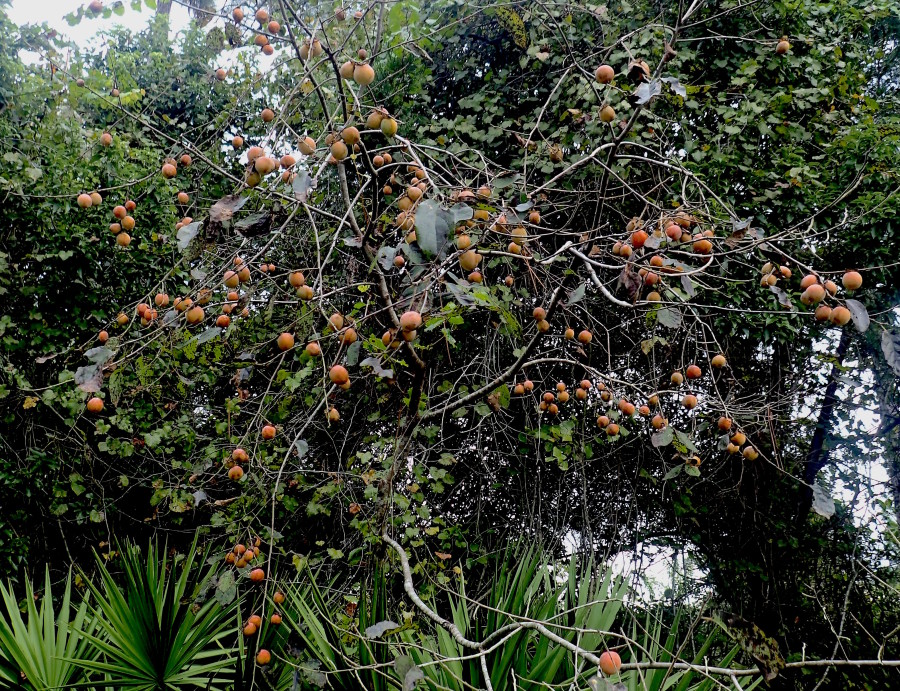
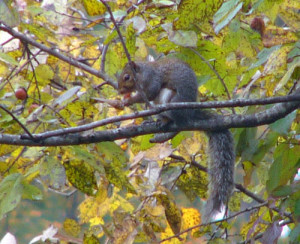
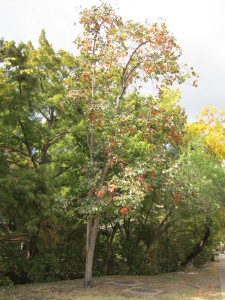
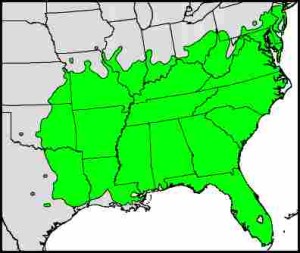
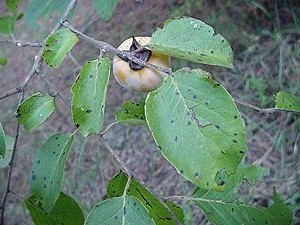


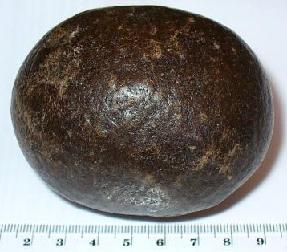
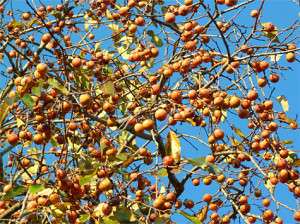
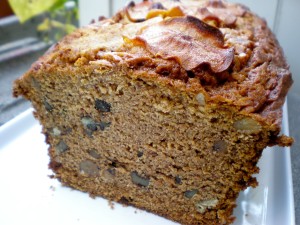

This is one of my favorite wild fruits, though it was a while since I’d had any. Having planted a few trees up here in northern New England a few years back, I’ve finally been able to harvest some. Although they’ve been completely hardy, the coming of cold weather rushes them a bit. Most are fully ripe ones, but some still have a bit of astringency. The first year they bore fruit, most of it was seedless, probably because the one male tree wasn’t up to the task of producing pollen that year.
By the way, I think the pawpaw takes the prize for the largest native berry.
I have persimmon trees all over the property and have been eating them since I was a kid in the 40s. The last 20 or so years wildlife has made such a comeback I can hardly find a persimmon at all. Persimmon thickets or of one sex and all the trees are clones, except environmental factors make the trees different shapes. I’ve planted pawpaw trees alongside a branch where is is pretty dampand I think I like them a little better than persimmons, maybe it’s the “newness?” It’s a chore to get those also.
G.D.: loving your site! Have been poring over all your archived pages and
find very interesting stuff. Comment, however, on your Uncle Remus story: the “title” of the animals is not “Briar,” but “B’rer,” a contraction of
“Brother.” Regardless of the political incorrectness, which I find mostly abhorent nowadays, these are still delightful childrens’ stories. Might read some to the grandkids whilst chowing down on some thistle stems with spinach dip…
Thanks. The book I had spelled it differently.
I am LOVING your site! We just purchased a farm and I am just now discovering all the highly cool things growing (amazingly without our help-which is why they are still growing probably). Your site is going to be my bible as I walk around. Thank you for so much useful information!!!
Hi there, I was looking for a persimmon bread recipe and found it on youtube, I have several trees in my yard but one is at least 45 feet tall
and it produces so many persimmons, I am wondering how do get the skin off of the fruit, do you boil them, or what is your method?
Thanks for writing. I peel them.
Hi Green Deane, Thank you for your awesome website! My husband and I have nearly made it through all of your youtube videos as well. I made persimmon bread from your recipe last week and I had to write to you and tell you how absolutely delicious it was! I was wondering if you have a good trick to de-seeding the persimmons? I felt like a lost a lot of pulp, as it was hard to get it off the seeds. Also, I just read that you remove the skins, is that necessary as I usually don’t bother? Cheers! 🙂
I have been anxiously waiting for our persimmons to ripen, and am happy to say, they have begun. Since they don’t ripen at the same time, I have been checking and picking every few days. They are so good!
I have made jelly and watched my 92-year-old mother make jelly from various wild foods, and it would seem to me, jelly could be made by adding a little water to the whole fruit, then straining it to remove pulp, seeds and skin, and continue from there to the jellying process.
Jam might be a better choice, so not to discard the delicious pulp. Hmmm, think I’ll give it a try.
Sorry, but I left out cooking the persimmons and water to break apart the fruit. Hopefully, that would be understood.
I have several trees that are at least 40ft. Is there a way to tell when the astringent is gone? The first 2 years we were here I waited till they were jelly like and everything was fine the past 2 years even some that are jelly like are astringent. I took to tasting a bit of every persimmon I put in the pot😕. This year they came in late. My trees are packed! They still don’t look ripe. If I go by the myth they should be ripe by the end of the week with the snow and hard freeze lol.
My diospyros virginianas are bending down with fruit.
They are very seedy (4-6 in each fruit)- seeds a lot of them/messy job to remove
Would like to make jelly from them
Is it necessary to peel and remove seeds?
Any thoughts, recommendations
Cheers Bert Dunn zone 4b/5a, Ontario
Cooking the seeds with the pullp might not be a good idea. Rubbing the seeds in a little water can help clean off extra pulp.
I enjoyed processing persimmons for pulp in a new way yesterday-z through a delicates laundry bag!! SO MUCH EASIER than a collander, plus delightful and satisfying!!
Hi Deane,
On your itemization of this tree, you state “TIME OF YEAR: Fruit ripens in September/October. Fruit is not ripe until the skin is wrinkled”. I have known the Persimmon for many years here in Missouri, and know that even coyote scat has persimmon seed in it when the persimmons start to fall.
But, I think your statement would be better stated ‘Fruit begins ripening in September/October’ as some trees do not ripen until, sometimes, much later. I have many persimmons around me here, and some trees are devoid of fruits as they have already ripened and fallen (I witnessed the fruits on these same trees earlier in the season), while others are still laden with just ripening fruits.
Of course, as all your readers know by now, seasons start later and end sooner the further north you go, so Missouri Persimmons will ripen later than, say, Texas. But the point is, I have been harvesting Persimmons for two months now and have another three or four weeks of harvest left, depending on the tree. By the way, I don’t know too many fruits you can harvest over a three or more month period.
Mike
Hi Dean,
I have a correction again. I really appreciate this wonderful creation of yours, so by criticizing, I’m not trying to disparage it, but on the contrary, to make it better in the small ways I’m able to.
I was under the impression that persimmon fruits were pomes, but I looked it up to make sure, and everything agrees with you about them being berries, however, I’m still sure they’re not the biggest. That title would most likely go to something in the cucurbitaceae. Even if you were only including undomesticated plants or fruiting trees, Asiminal triloba’s fruits are larger, and also considered berries.
The persimmon is considered the largest berry in North America. The pawpaw is considered the largest fruit. I think we both would agree a watermelon would outshine them both on size but botanists are particular on structor (except when it comes to the difference between plums and cherries which they seem not able to see.)
I thought the jackfruit was the largest fruit
The Jack fruit is not native. The persimmon is.
Best article on persimmon I have seen. Thank you for your fine work. We produce a persimmon leaf tea and it is my experience that harvest must be timely for tea. After a certain point development the leaf is not of good tea quality. Also, persimmon leaf tea blends with New Jersey Tea, Lemon Balm and a snip of chocolate mint.
Article wrongly limits the native distribution of Persimmons. They grow along the edge of lake Eerie and in other places around Southern Ontario. I believe they grow to the top edges of the Carolinian forests.
Besides that great article.
Thanks for letting us know persimmons are more availabe than official maps say.
Great info except the bit about shaking the tree
to get the persimmons. Most trees are much too
large to shake and you would be making the almost
ripe persimmons ,not the ripe ones, fall off the tree if you “could” shake it.
We put tarps down under the trees to keep the
persimmons clean when they fall.
Out harvest is usually a month but varies according to
the different trees.
The reaction the letter-writer above had was more likely to bacterial or fungal toxins present in the seeds from which he brewed his coffee. I’ve had a similar reaction after eating cooked corn kernels harvested from field corn cobs after they had lain in the fields for a while post-harvest. Tasted fine, made me sick as a dog. And that’s just the acute reaction — some such toxins are also long-term incredibly potent carcinogens (e.g., aflatoxins; Koreans have incidence of cancer from fungal overgrowth on kimchi). Recommend readers avoid decomposing food unless you know exactly what microbes are present.
Stanton,
I think you have some facts wrong about Kimchi. It does not involve any fungus, but it does involve a fermentation that involves a bacteria, lactobacilii, which make the dish tart, just like it does to milk when it turns it into yogurt. It actually is a very healthy dish, and it was voted one of world’s five healthiest food by health magazine. Thanks to kimchi, Koreans exceed their daily vitamin C recommendation throughout winter, even when the greens are not as abundant. It’s known to be rich in other vitamins and fiber as well. It is true that their is a fungal toxin called aflatoxin, and it was linked to liver cancer and to a bean/grain fermenting process in a southern province in China, I don’t recall that ever being an issue in Korea. They do have their share of certain cancers of higher incidence, but those tend to have more obvious link such as smoking, and viral infections. By the way, as someone who gets exposure to what could happen when things go wrong, I totally agree with Green dean’s approach to mushrooms. If you were to try wild mushrooms, please keep it to yourselves, and don’t give any to small children, as the result can be devastating.
With respect to seediness of fruit, you might try a self-fruitful variety or even a hybrid. My Meader, grown alone, averages 1 seed/fruit, and the fruit run 1-3/4″ diameter. (Taste preferences vary among virginiana cultivars.) My Russian (virginiana x kaki) hybrid gives 2″ diameter fruit, but is harder, more astringent, and has a shell-like unpalatable skin. Sample before you select!
Wow! I loved reading the story of the friend with the heart condition, his story is somewhat similar to folks that had gotten bee stung a number of times and where it healed rheumatoid arthritis in them for a season.
Guys’ its so good to see “us” eating, roasting, and enjoying this gift from our Father.
Keep up the discovery, and lets loose the pills, at least a few of the pills LOL
What great information about persimmons. I have a lake house in the Ozarks, Tablerock Lake by branson, MO. I have 4 persimmonn trees in my yard and have scoped out about 8 other trees in the area. Of couse they grow wild and none of my neighbors harvest their persimmon so I am welcome. The trees are full and I am waiting on the first hard frost…as tradition dictates in this area. I have a million questions, as last year I harvested several gallons but they got freezer burn so I was never able to make wine.
I know how t tell when they are ripe, wrinkling, sweet and just falling off the tree or about to. Since the harvest season lasts over a month, do you pick and freeze them…waiting for the other to be ready? If you pick them a little green can a you leave them out a few days to ripen like tomatoes or bananas off the tree?
Manually removing the seeds is very difficult and wasteful of the pulp. When making wine, couldn’t the whole fruit be used and later seeds, pulp and skin could be filtered out? Is there any toxicity to the seed, like CN- in apricot seeds, or Ricin in castor beans?
I want to rent a cherry picker as the trees are quite tall and LOADED at the top. This would require harvesting the tops at the same time and might yield some greener persimmons. Again, can I set them out till they ripen?
I have a few persimmon recipes for wine. Does anyone have a recipe that yields a a good wine and uses the whole fruit.
By the way….here the geese eat the fruit…as their poop is full of seeds!
Thanks for any help you can give me!
Janet in the Ozarks
You can put them in a cullender and rub them around the cullender with a wooden spoon or the like.
We squeeze them through a potato ricer. Takes just a few minutes to process several cups.
I love your website! My husband and I discovered our neighborhood has wild persimmon trees. We didn’t know what they were, but now that we do we picked the trees pretty clean and will be making jam for the holidays! I also have lots of oak trees, so will be trying that also. I may even try some toasted grubs 😉
Hi Teenie!
Sounds like our area too — lots of wild persimmons, tons of oaks, and a lot of pines too (the persimmons really seem to like growing under the pines). We’re picking ours like crazy too, and I think I’m also going to try for jam or preserves with them (I’m new at such things, so here’s hoping it goes well).
Well, enjoy! Glad to see others are enjoying wild persimmons as much as we are!
I wonder the difference between wild persimmon and those sold in store around this time. The store version looks much larger than any wild ones I’ve found, but I have yet to taste the store ones. Store bought also has a star pattern inside.
The ones in the store are usually from Japan, or are Japanese varities, cultivated not wild.
Wonderful article. Anyone have a persimmon jam recipe to share?
Best!
Love finding this article. We recently found several persimmon trees growing wild in our area of Texas (NW of Houston). My girls and I have had a wonderful time picking as many as we can (so many are up too high!). Thanks for posting these recipes and tips, as well as the interesting history of the tree and its name — as a student of Ancient Greek I found it very enlightening.
Not sure how others find theirs, but our trees are still ripening fruit here even as November grows to a close — does anyone know if Persimmon trees are difficult to grow from seed, or if it’s better/easier to get a seedling or starter and plant that? They seem to grow so well wild around here we’re considering adding one or two to our yard.
Happy Thanksgiving Everyone (I’m thankful for fresh, wild produce this year!)
Persimmon trees are easy to grow from seed, but the chief disadvantage of growing a persimmon from seed is that persimmon trees generally produce either all male or all female flowers, so a seed grown tree might just produce pollen instead of fruit. If I were going to plant a tree in a prime spot around my house that could be expected to outlive me, I’d invest just a little more time or money upfront for a selected grafted cultivar. There are a few nurseries in Tennessee and Kentucky — I don’t know if it’s appropriate to name commercial businesses in these comments — that I’d recommend and that each carry about a dozen or more named cultivars. Or you could plant a seed and then graft your favorite wild tree onto it, although in my experience persimmons take more attempts than some other species to get successful grafts. Whether you buy a grafted tree or graft one yourself, another benefit is that you should get fruit much sooner, because mature wood is used for grafting, whereas the new growth from the seed won’t want to spend more years maturing before it starts to fruit.
I wonder if rooting a limb from a tree that produces fruit would be difficult. I can tell you I have done this w/a citrus tree and it grew much faster than from a seed. I have read that a tree grown this way is an exact replica of the parent tree.
Wish I’d known I could do something with the leaves sooner — they’re almost all turned and fallen at this point around here — good info. for next year though! Thanks!
Persimmons aren’t supposed to grow here in central New Hampshire, but we have a thriving grove of them. Our dogs dig through the leaves to find the drops. If there’s a late spring snow, the early robins eat the frozen ones still clinging to the branches.
We run them through a potato ricer to make bread and muffins. Thanks for your article, now there are several new things we’ll try.
Enjoyed your article, and have just stumbled upon your website so will be reading it all soon.
Doc..I have made some nice batches of persimmon wine. Gather the persimmons as they get ripe and rinse them off and put them in a ziplock freezer bag until you get about a 5 gallon bucket full, or as many as you can. Once you have all you can get take them out of the freezer to thaw. It helps if you generously cover them with sugar as they thaw to help them break down to juice. Once thawed put them in a big pot on the stove and bring them up to about 170 degrees to kill most molds and bacteria, and juicify them(I know juicify isn’t a word, I just like to say it). Do not boil or get too hot as this may bring the bad stuff out of the seeds, and also keep your wine from clearing up like you want it to. Put them in a mesh bag wine press and press out all the juice. Take the mesh bag of skins, pulp and seeds and put it back in the pot with more water and do it all again to get yourself some more juice. Press it one more time and discard the stuff remaining in the mesh bag (I give it to our chickens and they love it). Once your juice cools, sterilize it with your Camden tablets and make your wine as you would any other fruit.
Stacey, to grow persimmons from seeds; harvest seeds in the fall and do not let them dry all the way out. just take a knife, fork or spoon and scratch off some of the outer layer of the seed. Wrap some of them up in a few paper towels, moisten the towels and stick them in a ziplock baggie and put them down in the crisper drawer of your fridge to stay moist and cool and forget about them over the winter. In the spring take them out and plant them an inch or two deep wherever you want them to grow. Plant several of them in the same area and let them all grow for 4-5 years or more even though they will be too crowded. Once they get old enough to flower you can figure out which are males and which are females and you can leave one or two males to a whole harem of females, and cut out the excess ones to make sure thy have room to grow and produce fruit. Good luck !
Thank you for great info. Have loved the rarely available Asian imported fruit in Vancouver. Sadly the best, like big tomatoes with pointed base are seldom picked ripe. Kept on window sill in sunlight are the sweetest of all fruit. Persimmons heal allergic reactions to air pollution and other toxins. As dried fruit will keep and still be effective. Would you mail leaves, etc?
Interesting, and yes. But vegetable material get a close scrutiny at the boarder.
Once you have a few trees located, try checking them at night when fruit is
plentiful. Most likely that you will find a ‘possum or two. Delicious baked.
Got a possum recipe?
I have a good possum recipe
tenderize possum and rub in spices.
put in butter milk and refrigerate for a day or two.
fry in butter and olive oil with garlic and ramps until near fully cooked.
add more spices if needed and some lemon juice.
rap in aluminium foil and bake at 350 until it is cooked thoroughly.
serve with whatever vegetable is in season
When I was a kid, I used to climb persimmon trees to get at the ripe fruit. Once, I climbed a tree with a possum in it; I grabbed him by the tail, and before he could twist around and nail me, I yanked mightily and threw him out of the tree!
I press the persimmons through an old fashioned sieve which belonged to my grandmother-It is cone-shaped, and has a wooden tamper. The cone keeps in the seeds and skin, and you are left with the lovely orange persimmon pulp.
Gluten-Free Persimmon Pudding
I find using all persimmons is too strong for my tastebuds, so I usually mix the pulp with pumpkin, sweet potato or butternut squash.
3 large eggs
1 ¼ cups Agave Nectar, Splenda or sugar
1 ½ cups almond flour, or regular flour
1 tsp. baking powder
1 tsp. baking soda
½ tsp. salt
1 cup organic coconut oil
2 ½ cups fat-free evaporated milk, or heavy cream, or coconut milk
2 tsps. cinnamon
1 tsp. ginger
½ tsp. nutmeg
2 cups persimmon pulp, or 1 cup pumpkin, sweet potato or squash pulp, plus 1 cup persimmon pulp
Preheat oven to 350 degrees. Mix all, place in lightly oiled baking dish. Bake about 1 hour. Cut into 2X2 squares to serve.
I am looking for Persimmon seeds. I live in Ontario and would love to try and grow one. I lived in South Korea for three years and would eat persimmons right off the tree.
A couple of things to consider. Oriental persimmons are bread to be non-astringent so you can eat them off the tree. North American persimmons have to be extremely ripe to eat them off the tree. Also, there are male and female trees so if you plant seeds you won’t know for decades what you have, a female tree that fruits or a male tree that does not. You are better of buying a small tree from a nursery which will guarantee you will have a female tree.
A few comments regarding East Asian (Oriental is no longer in use) persimmons; specifically, S. Korean. I have lived in S. Korea for 2o years and have a persimmon orchard consisting of 20 trees. There are 3 varieties of persimmon grown here, all of which are highly astringent (tannin) if eaten before maturity. I actually use them to add tannin to my homemade persimmon wine (and others) because I have not been able to find wine tannin in S. Korea. I also used to marvel at the old people in the village who would casually pick a leaf off a tree and eat it as if it were a snack. I later learned of its health benefits. They are one of very few fruit trees in Korea that have no natural predators; thus, they require no pesticides/herbicdes.
The Caddo made dried persimmon loaves of about 20″X2″X10″ for trade items and for eating. They peeled the bark off a log and dried them there. Their word is Us,said harshly.
Have many American persimmon trees and organic (of course) seeds to share for a SASE. The postage on the envelope will determine the number sent, The young trees are beautiful with colorful new leaves. No one mentioned the white utinsels in the center of the seeds. Wouldn’ t a timed germination film be wonderful?
I missed the names on your Backyard Foraging video of the plant that looks like betony and has crisp white roots that are sweet. One of my gardeners used to love them raw. Didn’t know the whole plant was edible. I have lots of onions like yours except much larger all over with fuller heads. Mine came from Oregon as Egyptian or Walking Onion. All
alliums make me bleed so I can’t eat them. They sprout green leaves from the top bulbs, get heavy , fall over and walk as they root about. That can be a lot of onions. I like to ‘can’ the little pearls in pretty glass jars to give away.
You did not mention the wild geranium in this video. Mine grow 3′ tall, have tiny lavender blooms all over, the stems are red, and the distinctive leaves turn pretty fall colors before they fade away with the heat. They make good tea and arrangements also.
Please, please, please put the names of the plants on screen so they can be read, and please keep your hands out of the way when displaying the plants. Love that magnifier but you need a tripod for it. Have a slingshot handle my father made ,BackWhen. that could work.
Started eating unlikely plants when I was very young, The first I remember was gardenias – scrunchey good. Next was blueberry blooms -sour good. Never could try ants like my brother – some were sweet an some were sour- I took his word- he was five. He still eats anything. I am allergic to most common foods. Do weeds have gluten my latest discovery? Thank you for this site , and would like to know how you got started. How did you get to Orlando? Esther B.
The plant is Florida betony, Stachys florida. I grew up in Maine and decided to go to Southern California to see some army buddies. My mother suggested I first visit an uncle uncle in Florida. 40 years later….
the white utinsels in the center of the seeds. Fork&Spoon, used for predicting upcoming rainfall.
Esther B. Thomas from a post of May 11, 2014 at 4:01 stated that she had persimmon seeds if yousend her a SASE. I would love to get seeds from her. May I please have her address.
I grew up eating persimmons as a military child in Augusta GA. My mother is from the South of France and there she grew up eating an abundance of them (called kaki’s in French) along with pomagrantes. All so delish!!!
Personally I would get my native persimmons from a nursery rather than planting seeds. Persimmon trees are male and female and you make have to way several decades to discover you planted all guys. They nursery will guarantee females.
Occasionally, I’ll drink a cup or two of pure persimmon coffee. It has never made me dizzy or affected my heart, but the Lord has blessed me with a cast iron stomach (figuratively). For those who like recipes: heat a cup of water and literally stir in 2 teaspoons of grounds. Add a little honey or cane syrup to taste. Let the brew sit a few minutes, possibly zap a few seconds in the microwave, then drink. You can drink slowly toward the end to leave the grounds in the bottom of the cup, but I prefer to stir the water and drink some!! No joke. If I feel like it, I’ll add more water and take down the rest. Now that’s getting the most out of life!
Don’t see a live link to the comments so I may be redundant, but–it certainly is not true that persimmons are absent in Appalachia. At least here in the heart of Appalachia, West Virginia, they’re common in ridgetop areas especially. We have some grafted ones which i believe are called Meader and are supposed to be a cross with the Texas variety, significantly larger than the virginiana and usually seedless–reputedly because the Texas variety has a different number of chromosomes.
I pick mine as “drops”, hoping to get to them before the bugs do. Yes, even if they are not wrinkled, as they will mix in. I certainly won’t eat those alone like that! Collect for a day and put it in water with a tiny bit of peroxide, cover and let it set a day. Rinse several times with clear water. Then I used the foodmill type thingy that is metal and you turn the handle so the blade scrapes the food in through the tiny holes into a pan or bowl you have set under the strainer thing. Reverse. Crank more and repeat, until all you can see are seeds and skin ( or leaves, twigs, if you missed some in the rinse). I freeze that in a bag and keep collecting for the season , then use when I have enough. That being said, this year my two trees have produced more than the last 3 years together! And are still going! SW Indiana, mid-Oct.
Can I freeze almost ripe (firm) fruit, then make jam at a later date? I certainly don’t want to waste time and energy making jam if it’s going to be inedible. I picked them early to beat the deer to them. They grow great here in north central Oklahoma.
It is my opinion that freezing unripe persimmons does nothing to improve them.
I was wondering did the coffee help his heart or make it worse I’m kinda confused because if it made him feel like a normal person why not keep taking it?I have an irregular heartbeat and I want to start drinking tea with the leaves is it something you shouldn’t take
I was just wondering if the information above applied to Diospyros texana as well? I noticed it was mentioned, but I wasn’t sure if it was mentioned to help distinguish between the two, or if the fruits, seeds and medicinal uses are the same for both types?
Thanks
Oh, and re: what made the gentleman sick who ate seeds from the ground, he might want to explore aflatoxin. I’m out west, and out here there are warnings not to pick mesquite pods off the ground to eat, but only take from the tree. The aspergillis fungus, which grows all over the US, feeds on many fallen fruit and veggies (corn is another), and some strains can produce aflatoxin. Boiling or cooking won’t eliminate much of and it can cause vomiting and abdominal pain, as well as worse things if eaten regularly.
It just sounded similar enough to what he experienced that I thought it was worth passing on. 🙂 Here’s an article about it with mesquite pods, for the limited value it may have: http://swes.cals.arizona.edu/environmental_writing/stories/fall%202013/trubl%20.html
Hi there, I had 3 Diospyros Virginiana trees in my yard up til yesterday, now I have one tree and 2 tall stumps. I kept the 30 ft tree that has more canopy to it than the other 2 did; the other 2 were about 50 ft tall logs with a tiny, sparse canopy at the top, which I was never going to be able to get fruit out of, so I had those chopped off about 10 ft from the ground. I am wondering if anyone knows if these stumps might sprout new life (like the camphor stump next to these that WILL NOT ever die)? Also, the tiny fruits I retrieved from these trees being cut down are not ripe; does anyone know if they will ripen while sitting on a window sill?
Yes they will sprout from the root
I recommend cutting those stumps down to ground level,then let one or two well spaced sprouts grow
Can also graft named varietys on those sprouts,way better !
I tried cooking up a batch of persimmon jam . . . it was a huge failure! It got very thick and bitter. I really want to master this. Please help!
They have to be ripe first… did you try them? (Said me who is not the greatest at making jam and jelly.)
Yes, I did try them and they were delicious. I spent a lot of time peeling and seeding them, and the pulp was glossy and gorgeous. When I heated them in the jam process, the pulp became chalky and bitter.
Maybe cook your persimmons and whatever other ingredients for your jam slowly in a low oven or dehydrator..might turn out more like a butter…doesn’t seem to like high heat from what I’m reading here. I’ve never tried it; just a suggestion…Good luck!
Making persimmon bread but am shot 1/2 cup of the pulp. What should I do? Help
Add banana, or cooked sweet potato.
Tom means Hypotension – if you have Hypotension or low blood pressure, you need to be aware (cautious) when eating persimmons since it has capabilities of further lowering your blood pressure to potentially dangerous levels
Lots of interesting information here. My friend and I gathered persimmons by shaking the tree and gathering from the ground (without a tarp -big mistake). We ate TONS of them that smashed in the fall right then and there (without washing -another big mistake). It has been 2 weeks now and we both have been VERY sick with unrelenting intestinal distress! Could this be a reaction to the persimmons themselves? I thought it was contamination from the ground, which of course it could be, but now I wonder based on some of the comments here if the fruit itself made us sick. Any suggestions about this or a remedy would be greatly appreciated!
Generally Sudanese are not familiar with Persimmon.My wife was telling how mmuch she enjoyed eating”Kaka” – Vernacular – during her childhood in Egypt. I’ve come across a report in the 80’s of last centuary criticising Egypt’s unwilling to utilize the well conditions to grow the plant on commercial scale and export the fruit.
hi i have 2 persimmon trees.my question is squirrels been eating the fruits before is fully ripe.any recommendation what to do. i am here in florida. thanks.
Sorry to be flip but yes.. eat the squirrels…
I had a squirrel problem. My tree is right above my walk at my back door and the squirrels made a big mess. About the time I was ready to remove the tree, the problem stopped. My two Rat Terrors caught the critter and had a feast. Now they are looking for another one for dinner.
I make ice box jam and freeze it in small jars. I take one out at as time and place it in the refrigerator. It is wonderful spread on whole wheat toast with butter or coconut oil.
I wash about three times to remove any residue, remove the cap and pin and carefully check for small gravel that may be imbedded in the fruit. I taste to be sure the fruit is very ripe and sweet – with no pucker power, then I use a colinder and and make several jars . I do not peel at all. Some I make with nothing added, some I will add a little honey and or cinnimon. I do not cook at all and it has worked well for me.
Conway, Arkansas
Picked up a large quantity of persimmons on a recent camping trip and kept them in camper fridge. Forgot them, seeds intact, in my basement fridge for a week. Are they still safe to use? Don’t want to risk some weird toxicity from the seeds.
They are like any fruit, if they look and taste good they are still good.
Hi there. I have a persimmon tree but this is the first time in 28 years that I have picked the fruit and just made pulp, which was a very messy process. Am so glad it is over! I plan on freezing the pulp in two-cup portions, which I obtained by putting the persimmons into a laundry bag and squeezing the pulp through the holes. My question is: There are a lot of “brown or black bits” that are in the pulp–is that acceptable, or should it be perfectly “bit” free? Please answer ASAP as I want to get it into the freezer as soon as possible. Thanks!
I was able to pick persimmons off the ground at a nursery, to retrieve the seeds to plant. Well after I got all the seeds out and into a glass of water, they are full of tiny maggots. Should I still continue the process?
Thank you so much for the article, knowledge, and assistance!
It depends on whether you want the protein.
Loved reading about you easterners and persimmons! My parents have a persimmon tree in southern california and we just picked the last batch yesterday – they’re hard now but will soften beautifully and fully ripen in about a week or so. I left 5 or 6 on the tree for the birds, squirrels and then bunnies get the fallen leftovers! The heat here makes the trees look ghastly but the fruit are larger than a baseball and fabulous. Can’t wait to try the Persimmon Bread recipe! Many thanks for a great site!
Persimmon is not the largest native berry. Not even close. Pawpaw is the largest native fruit and technically the largest native berry as well since pawpaw fruit is technically a berry. Sorry to correct you, still love persimmon and the article but I am a pawpaw man.
I like to put persimmons in the freezer rather than go through the trouble of separating the pulp – Then when I want to eat one or two throughout the year, there they are! When in season, I have to beat my dogs to the trees because they love them too.
Greetings, may I please get some fresh persimmon tree seed from you? I can send you a self addressed stamped envelope if you like. Thanks in advance.
Hello, I was wondering if you had any info on eating persimmon seeds? I have one book that says Native Americans ground them up for gruel. I believe that’s what it said but I can’t find the particular book in my sea of book clutter. I don’t see any mention of this in any of my other books or on the net. Any part of persimmon trees at all edible besides the fruit? Thanks and love the site.
Just wondering if persimmon blooms are good to eat or are they poison?
I have never tried them. On my list of things to do.
There are colanders with a wooden pestle for working the pulp out =)
What is the best way to start a tree from the seeds? I have tried freezing then planting. I am having no luck. My grandma has the biggest best persimmons! I would like a start from her tree! Thanks.
For the gentleman with the heart problems: I am wondering if the seeds contain some form of magnesium and by processing them in your second way it brought that out. Just a thought because a lack of magnesium will cause heart arythmia.
Awesome article, I never thought about using the seeds for coffee! Persimmons do taste like dates, but only if you dry them first. Our chickens usually get the persimmons, lately I haven’t been seeing any on the trees themselves either.
Thank you for the tip on the dried persimmon leaves, I tried fresh ones in tea and they weren’t so good!
Hi,
I live in Utah and just recently learned there are some wild persimmons here. Do you have any info on where I might find them? Distribution maps? Habitat?